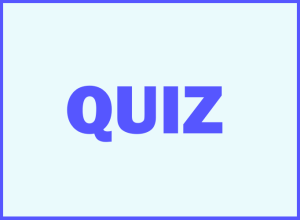Chirality and Enantiomers
Before talking about the enantiomers, let’s go over the concept of mirror images and particularly when it pertains to organic molecules.
Any object has a mirror image. No tricks or magic here – just put a mirror in front of anything and you’ll see its mirror image:

Now, things aren’t going to be as simple in an organic chemistry class, and we know that… The origin of things getting a bit more complicated in the business of mirror images is that some objects are not the same as their mirror images. The simplest example is our hands. They may look identical, but you won’t be able to swap them without having the fingers in different positions or orientations.
So, how do seemingly identical objects become not quite identical? This has to do with the symmetry of the object/molecule: symmetrical objects are identical to their mirror images. For example, let’s look at the glasses shown above. They are the same as their mirror image, but if we replace one of the lenses with a dark lens, the mirror image is now different – you cannot replace the glasses with the mirror image. It does not repeat the object in space because the position of the lenses is different.

And this is because the glasses with a dark lens are no longer symmetrical, and therefore, their mirror image is not an exact duplicate.
In chemistry, the word for describing a mirror image being identical or different is “Superimposable”.
If the object and its mirror image are the same, they are superimposable; if these two are not the same, then they are non-superimposable images. Any object that is non-superimposable to its mirror image is said to be Chiral.

The same goes for molecules: Chiral molecules are not superimposable on their mirror image. Achiral molecules are superimposable to their mirror images, which indicates that the mirror image is the same compound. Notice the letter “a” before the word “chiral” – achiral means not chiral.
Stereogenic Center – Origin of Chirality
Next, we need to discuss what makes molecules chiral, or, which is to say, their mirror images are not superimposable with the original structure. Although there are different types of chiralities, most often, the origin of chirality in organic molecules is the presence of an asymmetric carbon. Notice that it has to do with symmetry, as we mentioned earlier for the objects. An asymmetrical carbon is a carbon with four different groups (atoms), also referred to as a stereogenic center or a chiral(aty) center.

If we draw the mirror image of this molecule, we will see that it is non-superimposable to it. And here is one new definition to learn: If two molecules are nonsuperimposable mirror images, they are called Enantiomers.

If you feel like this is some kind of trick and the objects are the same, try building the two molecules using a model, and you will see that you won’t be able to repeat identical representations – they are not superimposable. Importantly, they are mirror images, and that is why we classify them as enantiomers.
Isomerism and Enantiomers
Enantiomers are types of stereoisomers since all the atoms are connected in the same but they have a different 3D orientation.
Here is a little scheme as a reminder about constitutional isomers and stereoisomers. It also mentions the diastereomers, but you can ignore those for now if you have not covered them in your class:

Getting back to the asymmetric carbon and chirality – A molecule can have more than one chirality center, and if you need to identify those, remember that you are looking for a carbon (even though it is not restricted to carbons only) with four different groups.
For example, these are the chirality centers in each of the following molecules:

To recognize the chiral center, look for the wedge and dash bonds, as usually, these are the ones indicating a chiral center.
One important thing to remember is that a carbon with a double bond cannot be a chiral center, as it does not have four different groups. Yes, it has four bonds, but that is the standard valence of carbon. It must have four different groups; therefore, it must have a tetrahedral geometry.
How to Draw Enantiomers
In general, the easiest way to draw the enantiomer of a given molecule is to simply redraw the compound, replacing all dashes with wedges and all wedges with dashes.

This is not a universal solution, though, because the wedge and dash representation is relative and depends on the direction we are looking from. To know for sure if two molecules are enantiomers, the Cahn-Ingold-Prelog system (R and S) is used.
Another way of drawing the enantiomer of a given molecule is to put an imaginary mirror and draw everything reflected, and this will also give you the enantiomer:

However, attention! – You should not do both: you should not draw the mirror reflection and change the wedges and dashes together with it, since you will end up having the same molecule:

You should either keep the molecule as it is and change every wedge to a dash, or you can place a mirror image anywhere (on the side, on the top, below, in front, or behind) next to the molecule and draw its reflection.
Do the following problems and check the next post on the R and S configuration, to double-check your answers.
Check out this 108-question, Multiple-Choice Quiz with a 3-hour Video Solution covering the most important concepts you need to know in Stereochemistry:



Thank you very much 😊
Such a great and good explanation….
I saw many websites but didn’t understand but this is very good
I understood it perfectly now.
Thank you
Great to hear that, Yuvan. Thank you.
Hello, why would letter (B) be the same while letter (A) is an *****?
Hello,
Did you have a chance to watch the video solution?